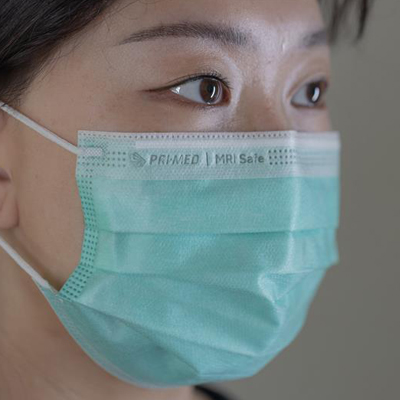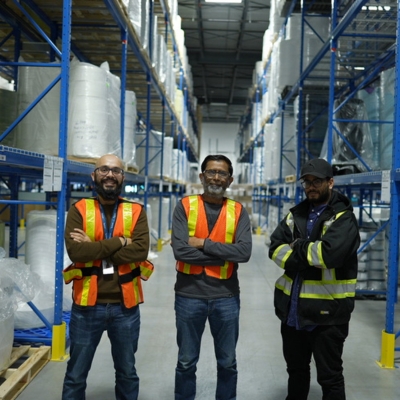Best Practices to Prevent the Spread of Infection

With the rapid spread of COVID-19, infection prevention is top-of-mind for many and we all have an important role in helping to flatten the curve. Viruses are easily spread by common human activity; therefore, a large part of avoiding infection is to limit our potential exposure.
Hand Cleaning: The First Line of Defense
There are all kinds of recommendations on the internet promising protection from illness ranging from drinking hot water every 30 minutes to wearing a face mask, but one of the most effective is also one of the easiest — handwashing.
There are all kinds of recommendations on the internet promising protection from illness, but one of the most effective is also one of the easiest — handwashing.
But when did you last pay attention to how thoroughly you wash your hands? For many, it’s a matter of getting through the process quickly — not so much about doing a great job.

Consider these tips to improve your hand washing routine:
- Take Your Time: The World Health Organization recommends washing your hands for 40 to 60 seconds to ensure the removal of germs and debris.
- Start with Wet Hands: While warm water is often best, any water will help to begin loosening the dirt and grease which could harbour germs and help the soap work better.
- Lather Up: Use enough soap to cover all surfaces of your hands. It’s better to use a little too much than not enough.
- Use Plenty of Contact: Rub your palms together, interlace fingers, and be sure to clean under and around your nails as well.
- Rinse and Dry Thoroughly: Proper rinsing is just as important as proper washing. Use plenty of clean water and dry your hands using a single-use towel or air dryer to avoid recontamination.
So When Should You Wash Your Hands?
Even with clean hands, there are certain areas of your body you can touch or actions you can take that might increase vulnerability or the risk of infection.
While regular handwashing is a good habit, emphasize washing again when performing any of the following:

- Touching Your Eyes, Nose, or Mouth: These areas are the most sensitive to exposure. Minimizing contact is best but if you must touch these areas, be sure to wash your hands first.
- After Visiting the Restroom for Any Reason: Even if you’re not using the restroom, sinks, paper towel dispensers, hand dryers and door handles tend to be hot spots for contagions.
- Preparing Meals or Eating: Thoroughly cleaning areas where food is handled and prepared (like countertops and sinks) and washing your hands before eating are simple ways to avoid exposure to potential illnesses.
- Before and After Wound Care: While minor cuts and scrapes are rarely life threatening, they are opportunities for infection. Be sure to wash up prior to and following wound care to minimize risk.
- After Coughing or Blowing Your Nose: Coughing and blowing your nose are ways for your body to expel whatever might be attacking your immune system. Be sure to dispose of any tissues and promptly wash your hands to both reduce your exposure and decrease the risk of spreading your illness to others.
- After Handling tissues, handkerchiefs, or other soiled items: If you’re in a situation where you have to clean up after others either in your own home or in public places, wash your hands as soon as you’re done.
- After Handling Frequently Touched Objects: If there are concerns of a virus or illness spreading in your area, be sure to wash your hands after touching commonly used objects such as doorknobs, shopping carts, or shared electronics.
What About Face Masks? Those Help Prevent Infection Right?
Yes — face masks are an important part of controlling the spread of infection.
However, they don’t work quite the way many people think — especially the ones you might find at your local pharmacy or retail store.
Even while wearing a face mask, you can still be at risk of catching something without additional precautions.
Face masks work best to prevent the spread of germs from a sick person to those around them. They are designed to contain sneezes, coughs, and other ways a sick person’s body might expel germs into their surroundings.
Depending on filtration levels and fit, masks may do very little (or even nothing at all) to help filter pathogens from the air you’re breathing in. The biggest concern is when people fail to follow proper precautions because they are wearing a mask. Maintain a realistic understanding of the protection offered by the model of mask you choose, follow proper use instructions, and don’t rely on the mask as your sole means of infection prevention.
Proper Protective Face Mask Use
How you put on and remove (also known as donning and doffing) a single-use face mask is critical to maximizing protection. Exact instructions might differ by provider. For these instructions, we’ll use a PRIMED ear loop face mask design as an example.
How you put on and remove (also known as donning and doffing) a single-use face mask is critical to maximizing protection.
Face Mask Donning Best Practices
Step 1: Thoroughly wash and dry your hands.

Step 2: Remove the mask from its packaging. Hold the mask with the outer layer out. (This is most often the coloured side.)

Step 3: With the pleats folding down, pull to open the pleats.

Step 4: Press the metal nose piece to the bridge of your nose to shape the mask to your face.

Step 5: Pull the ear loops over your ears.

Step 6: Press the nosepiece again to ensure a secure fit.

Face Mask Doffing Best Practices
Step 1: Thoroughly wash and dry your hands.

Step 2: Pull the ear loops back over your ears taking care to avoid touching other parts of the mask.

Step 3: Dispose of the mask immediately to prevent further risk of contamination.

You can also check out our instructional video below for visual instructions on face mask usage.
Summary
Proper handwashing techniques and minimizing contact with sensitive areas — such as the eyes, mouth, or nose — are essential to limiting the spread of illnesses.
If you’re already ill, face masks are an excellent way to reduce the potential of spreading the infection to others. However, many consumer-grade masks should not be relied upon as the sole means of protection for those who are still healthy.
Regardless, proper donning and doffing are critical to maximizing the benefits of these popular pieces of personal protective equipment.
Please Note: While protection and prevention are important, early detection and treatment of many of today’s most common illnesses can both reduce the risk of serious harm and overall recovery times. Every contagious disease spreads uniquely. As such, the precautions you should take might vary. Always consult with a healthcare professional if you have questions or concerns or if you believe you might have an infectious disease.
More Information About COVID-19
For more information about preventing the spread of COVID-19 check out our FAQ page. For important and timely updates consult reputable sources like Health Canada and the World Health Organization.
PRIMED manufactures medical face masks, medical gowns, and other high-quality personal protective equipment for healthcare professionals and facilities. Please note that we do not provide medical face masks to the general public, instead focusing on supporting front-line healthcare workers and service providers.
Related Resources
PRIMED MRI Safe Mask: Safe by Design for Purpose-Built Protection
PRIMED's ASTM Level 3 MRI Safe Masks offer a high-quality, purpose-built solution that merges MRI compatibility with premium protection.

From the Sterile Core to the Decision Table: Elevating the Voice of MDR Professionals
MDR professionals don’t just process products, they influence how they are designed, selected, and standardized.
%20-%20Sterlization%20Wrap%20Display%20(1).jpg)
Protecting with Purpose: The Supply Chain Behind the Mission
PRIMED, resilient through the pandemic, has evolved our supply chain - now stronger, smarter, and ready to meet future challenges with agility and confidence.


